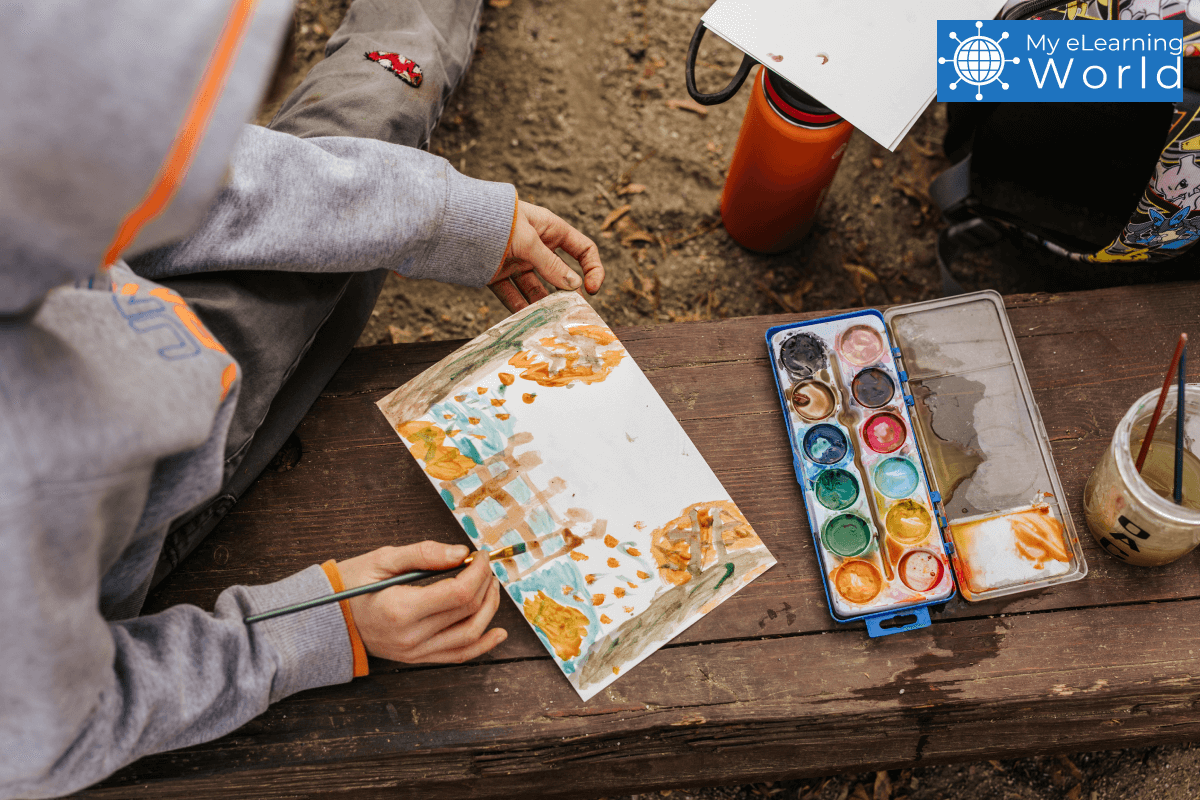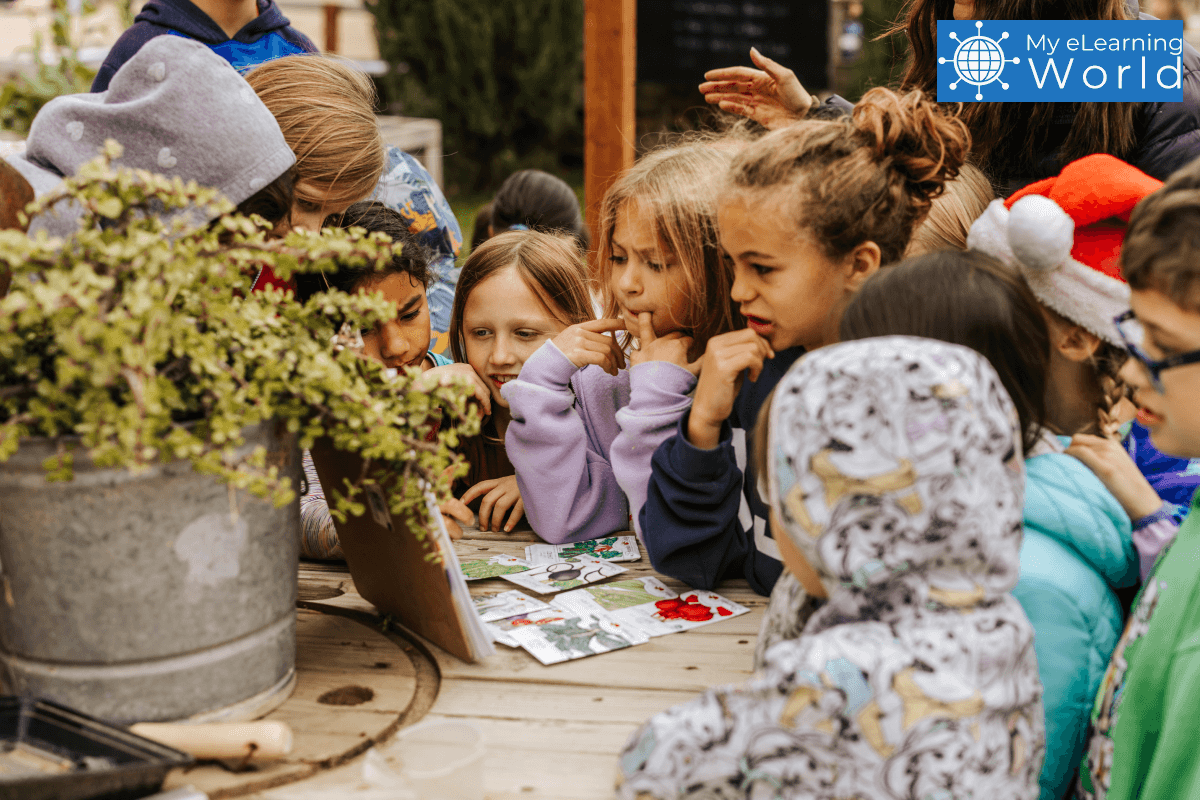“If a child can’t learn the way we teach, maybe we should teach the way they learn.” ~ Ignacio Estrada
At Outsiders Adventure Co., we design every course, lesson, and learning moment from the ground up. We do this intentionally, thoughtfully, and always with our learners in mind. This isn’t just a scholastic choice; it’s a philosophy rooted in the belief that education should be as unique as the children we teach.
We often get asked why we don’t just use pre-packaged curriculum, align to standard pacing guides, or adopt a uniform approach across all our classes. The answer is simple: custom education meets real needs. And we’ve seen firsthand how building our own materials gives our students more than knowledge. It gives them a sense of ownership, curiosity, and capability that no off-the-shelf curriculum ever could.
This article is a deep dive into our instructional design philosophy and an invitation for fellow educators and course creators to consider the power of customized course development—not just for outdoor education, but for every learning environment.
The Philosophy Behind Custom Course Design
At the heart of Outsiders Adventure is a commitment to create adaptive, experience-rich, and student-responsive content. This means we don’t just write lessons; we write life.
Our units don’t begin with standards—they begin with wonder.
We ask:
● What do our students need right now?
● What are they curious about?
● What skills will help them thrive beyond the classroom?
● What kind of learning environment are we working with?
When we begin here, curriculum becomes a living, breathing thing. It flexes with the students, morphs with the seasons, and follows the wild winds of imagination while anchoring itself in tangible skill-building and meaningful academic growth.

Instructional Design in Action: A Different Blueprint
For instructional designers looking to create more human-centric courses, our process might serve as an unconventional (yet powerful) blueprint:
1. Start With the Environment
Instead of building courses in a vacuum, we start with context. What surrounds the learner? Literally and metaphorically? Whether it’s the forest, a workshop, a community space, or a kitchen table, the learning environment deeply informs the approach.
This is where many traditional instructional models falter: they fail to consider the space learning inhabits. For us, a tree stump can become a science lab, a trail, a history timeline, and a creek bed a poetry prompt. For you, it might be a community garden, a makerspace, or a digital collaboration studio.
Designing instruction that responds to the environment brings education alive.
2. Build for Whole Person Learning
We don’t separate cognitive learning from emotional growth or physical experience. Every lesson is designed to speak to the head, the heart, and the hands.
When we designed a course on The Island of the Blue Dolphins, we didn’t just assign reading comprehension questions—we taught survival skills, hosted a regatta, explored native flora and fauna, and let students recreate the oceanic weather systems. In our Archimedes unit, we pulled in solar ovens, pulleys, and debates about intellectual property.
The result? Students don’t just learn—they live the content.
As a course creator, this approach forces you to zoom out.
Ask yourself:
● Does this content invite learners to explore, question, build, create, connect, and reflect?
● What would it look like to teach this concept in a way that a student could touch it?
3. Write Curriculum That Moves
Our courses aren’t static PDFs or lesson packets—they evolve. We write for seasons, for moments, for students in motion. When our learners change, so does the course. We adapt pacing, reframe discussions, and allow projects to shift direction based on interest and energy.
This requires tremendous flexibility from instructors, but also yields tremendous freedom for learners.
If you’re creating instructional materials, consider writing a curriculum that’s modular, open-ended, or tiered by ability and age group. Make it possible for your content to move with your learners, rather than forcing your learners to conform to it.

Why We Don’t Outsource Learning Design
In a world saturated with templates, scripts, and pre-fabricated resources, building from scratch might seem impractical. But here’s what we’ve found:
● Pre-made doesn’t mean personalized. Even the most “customizable” resources often assume a one-size-fits-all approach.
● The magic is in the making. When we write our own material, we weave in the stories, values, and challenges that make our community unique.
● Students can tell the difference. They engage more deeply with lessons that feel handcrafted, intentional, and made for them.
We don’t dismiss the existing curriculum altogether (there’s wisdom and structure to borrow) but our foundation is always original. That means we’re not adapting a boxed curriculum to fit our kids. We’re adapting learning to fit the kids we actually have.
What Course Creators Can Learn from the Outsiders Approach
You don’t have to run an outdoor education company to embrace custom education. Whether you’re a teacher in a classroom, a coach building a professional development course, or an online content creator designing digital learning experiences. These principles scale.
Here’s how:
1. Design from the Student Backward
Instead of beginning with outcomes or checklists, begin with empathy. What does the learner care about? Struggle with? What barriers are in the way and what doors need to be opened?
From there, build a course that isn’t just informative, but transformative.
2. Make Learning Multi-Sensory
Let learners taste, build, touch, move, and reflect. Even digital courses can invite physical interaction—through challenges, journaling, or real-world experiments.
Not everything needs to be seated, quiet, and screen-based. Learning is more memorable when it gets under your fingernails.
3. Build Opportunities for Mastery and Expression
In every Outsiders Adventure unit, there’s room for students to show what they know in a way that feels authentic through art, presentations, model-making, writing, or storytelling. This isn’t an “end of unit project”, this is the learning.
As a course creator, you can build in choice and voice. Let learners pick how they demonstrate understanding. Watch engagement soar.
4. Stay in Prototype Mode
Our courses are never “done.” We take notes after every unit, reflect on what worked (and what didn’t), and revise accordingly. Instructional design should be iterative, not final.
Give yourself permission to beta test. Treat your courses as living things. Invite feedback. Tweak constantly.

Celebrating a Culture of Creation
Ultimately, what we’ve created at Outsiders Adventure is more than a school—it’s a culture of creators. Our staff writes curriculum. Our students shape content. Our families contribute ideas, stories, and even lessons of their own. And that’s what makes our courses powerful: they are born out of community and built for connection.
To fellow instructional designers: don’t be afraid to leave the pre-fab paths. Build something wild. Write something weird. Design something that couldn’t exist anywhere else but where you are.
Education should be beautiful. Personalized. A little untamed. And it should be yours.
Ready to Explore the Outsiders Way?
At Outsiders Adventure Co., we’re always building. Our team of guides and curriculum designers write each class as a love letter to childhood curiosity, resilience, and adventure.
We believe every educator (whether classroom-based, homeschooler, or course creator) can benefit from ditching the script and leaning into custom creation.
If you’re curious about how we build our units, explore collaboration, or training, connect with us! We’d love to share what we’re learning on this wild, beautiful path.
Let’s create something that lasts… something that matters.


